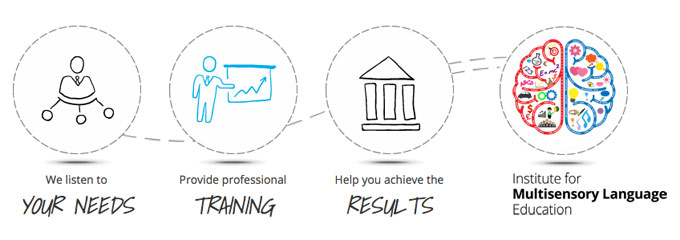What is Multisensory Structured Language (MSL)?
What does MSL and SL stand for?
MSL stands for Multisensory Structured Language. SL stands for Structured Literacy. MSL and Structured Literacy are based on the same principles of instruction required for effective reading instruction. MSL/SL includes the 6 essential components of reading/literacy outlined in the National Reading Panel research document as well as in the body of research known as the Science of Reading (Reading League, 2020).
MSL (IMSLE) is not Orton Gillingham per se. OG has many variants and many programs in the USA that are based on OG. MSL offered by IMSLE (AUS) has been written by IMSLE and offers a consisitent approach which teaches the what, how, why, when and for whom) and is not offered as a program.
What is meant by Multisensory teaching?
Multisensory teaching is one important aspect of instruction for dyslexic students that is used by clinically trained teachers. Effective instruction for students with dyslexia is what all student require that is instruction that is direct & explicit, structured & systematic, cumulative, cognitive,intensive, emotionally sound and focused on meaningfully taking speech to print. The multisensory component involves the use of visual, auditory, and kinesthetic-tactile pathways simultaneously to enhance memory and learning of written language. A skilled MSL educator provides direct instruction to ensure links are consistently made between the visual (language we see), auditory (language we hear/perceive), and kinesthetic-tactile (language symbols we feel) pathways in learning to read and spell.
Margaret Byrd Rawson, a former President of the International Dyslexia Association (IDA), explains how the multisensory component is required for students with dyslexia (although this approach assists all learners):
Students particularly those with dyslexia need to be taught, slowly and thoroughly, the basic elements of their language—the sounds and the letters which represent them—and how to put these together and take them apart. They have to have lots of practice in having their writing hands, eyes, ears, and voices working together for conscious organization and retention of their learning.
The training courses delivered by IMSLE (Australia) have been adapted, the courses are dynamic and evolving. IMSLE courses have been adapted to reflect best practice and offer a bridge from the science of reading research to educational practice. The Associate MSL course that IMSLE offers is based on peer reviewed research in the fields of language, literacy, linguistics and cognitive sciences. The IMSLE Training Team has a continuing interest in educational and scientific research and this ensures that all IMSLE courses are strongly focused on bridging scientific research to educational practice. MSL instruction is suitable for all students regardless of the cause who are struggling to master written print.
Read IDA: Effective Reading Instruction
Read by Louise Spear Swerling: Here's why Schools should use Structured Literacy
Reference IDA Fact Sheets

